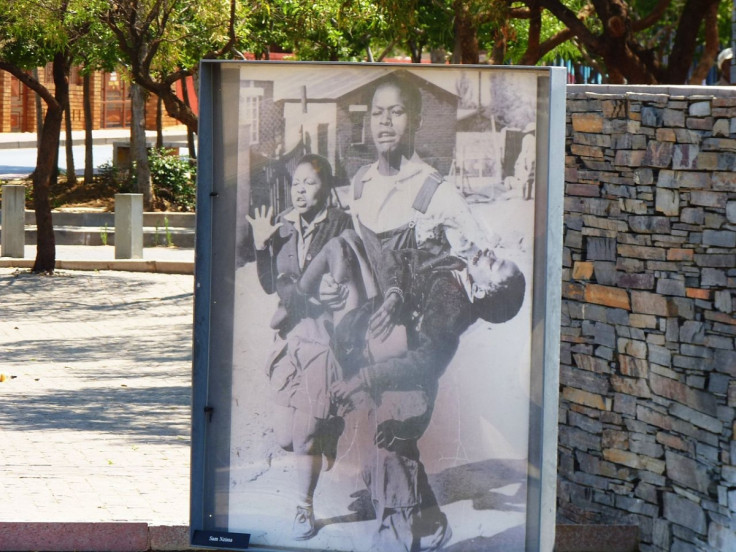16 June Soweto Uprising: South Africa Remembers the 1976 Student Massacre

People across South Africa are marking the 38th anniversary of the Soweto uprising, when thousands of teenagers took to the streets to protest against a new government decree.
Hundreds of unarmed students were shot dead by South African police during the protest on 16 June 1976. The exact number of victims is unknown, with estimates ranging from 176 to 700.
Why did the students protest?
Black high school students took to the streets of Soweto, an urban area of Johannesburg, to protest against the Afrikaans Medium Decree, which introduced Afrikaans as a compulsory language for education.
According to the decree, maths and social studies were to be taught in Afrikaans, with general science and practical subjects in English, while indigenous languages would only be used for religion and music.
When introducing the new law, Punt Janson, Deputy Minister of Bantu Education, said: "No, I have not consulted the African people on the language issue and I'm not going to. An African might find that 'the big boss' only spoke Afrikaans or only spoke English. It would be to his advantage to know both languages."
The students did not agree with the introduction of the new language, seen by many as "the language of the oppressor". Students encountered several difficulties when studying subjects in the new language.
Their resentment grew until they decided to voice their dissent.
Police fired on unarmed schoolchildren
On the morning of 16 June 1976, between 10,000 and 20,000 students - led by the Soweto Students' Representative Council's (SSRC) Action Committee - marched towards the Orlando Stadium in Soweto.
The police, however, set up barricades to stop the schoolchildren reaching the stadium. The protesters eventually took another route. Police officer Colonel Kleingeld fired a shot in the air to intimidate the schoolchildren and officers threw teargas.
According to Jon-Jon Mkhonza, a student who took part in the march, "it was chaos. Whenever the police shot teargas, we jumped the wall to the churchyard and then came back and started discussing again."
Protesters reacted by hurling stones at the police, who opened fire on unarmed schoolchildren.
Clashes between police and protesters lasted until night.
Hector Pieterson – Symbol of the Protest
Hector Pieterson, 13, was one of the first schoolchildren shot by the police. He was rushed to a local clinic and declared dead shortly after.
When he was shot, Pieterson was picked up by Mbuyisa Makhubo (an 18-year-old schoolboy) who together with Hector's sister, Antoinette (then 17), ran towards the car of photographer Sam Nzima, who took a picture of them. The picture became the iconic image of the day's violence.
The Hector Pieterson Memorial and Museum was inaugurated on 16 June 2002.
38 years on - and the challenges remain
16 June is designated as National Youth Day in South Africa. The public holiday commemorates the hundreds of students killed during the protests, and aims to raise awareness of the problems faced by the young community in South Africa.
This year, Gauteng Premier David Makhura, Infrastructure Development MEC Nandi Mayathula-Khoza and Culture MEC Molebatsi Bopape created a R48m (£26m) memorial acre. The memorial includes the statue of Tsietsi Mashinini, one of the student leaders of the march.
"The institute will become a centre for memory and a resource for young people to contribute to community development through various youth developmental programmes that will be run from the institute," the Gauteng government said in a statement.
According to critics, students face big challenges today, just as they did in 1976. While the problem of segregation has diminished, the challenges of HIV, economic stagnations and high rates of unemployment have sprung up in its place.
"The high rate of unemployment and the super-exploitation of young people in the different sectors of our economy, are some of the biggest challenges facing today's young people," National Education Health and Allied Workers' Union (Nehawu) spokeswoman Sizwe Pamla said in a statement.
"The battle for fair wages and better working conditions needs unity and mobilisation by all workers, especially young ones, who are the custodians of the future.
"The HIV and Aids pandemic still poses the most serious challenge for young people in South Africa because they are the most vulnerable from the disease."
© Copyright IBTimes 2024. All rights reserved.







